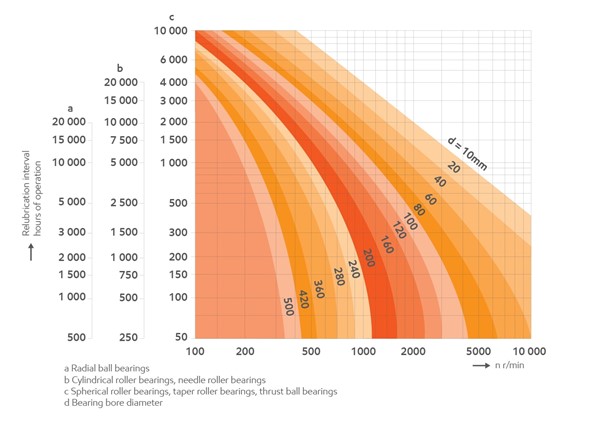Part 2 of a 3 Part Series on Lubrication Issues
A Key aspect of Plant Maintenance is establishing how often a Motor Bearing should be lubricated along with determining the proper amount of Lubricant to be used. Note that applying too much grease or too frequently is a common cause of premature Bearing Failure.
Key factors in determining Lubrication intervals include:
Motor Frame Size and Speed – Larger Motors have Larger Diameter shafts resulting in much higher surface speeds. Motor operating speeds also contribute to higher surface speeds necessitating more frequent lubrication intervals as illustrated on the following chart.

Type of bearing – Roller bearings and thrust ball bearings require more frequent lubrication intervals than radial ball bearings.
Ambient Temperature – Higher ambient temperatures require more frequent lubrication intervals.
Contamination and Moisture – Heavily contaminated atmospheres and / or high ambient humidity require far more frequent lubrication.
Vibration – Heavy vibration will cause grease to migrate requiring more frequent lubrication.
Operating position – Vertical motors require more frequent lubrication than motors mounted horizontally.
The Amount of Grease required for a specific bearing is determined by the formula volume (fluid ounces) = 0.11 X D X W where D = Bearing Diameter in inches and W = Width of Bearing in inches.
The In- House Technical Specialists at the Flolo Corporation have extensive knowledge of lubricants and their proper use as well as best relubrication practices. Additional information on motor bearings and lubrication is available and the subject is covered in more extensive detail in classes available thru Flolo Tech. Please contact your Flolo sales representative for additional details.
